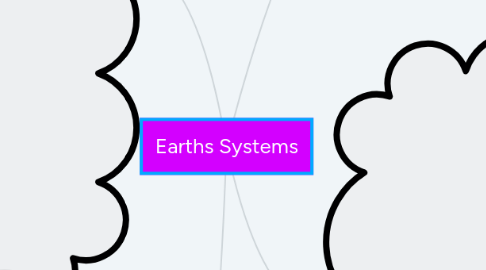
1. Biosphere
1.1. all life forms on earth
1.1.1. in the air
1.1.1.1. more than 1,800 kinds of bacteria
1.1.1.1.1. Allergies- affect roughly 17% of the U.S. population
1.1.1.1.2. Flu/influenza
1.1.1.1.3. Aspergillosis- Fungal spores inhaled from decomposing organic matter
1.1.1.2. Animals
1.1.1.2.1. Birds
1.1.1.2.2. insects
1.1.2. In water
1.1.2.1. Bacteria. Cyanobacteria. Protophyta. Green algae.
1.1.2.2. Fish
1.1.2.3. aquatic plants
1.1.2.4. Diatom. Synura. Euglena. Dinoflagellate.
1.1.3. On land
1.1.3.1. acidophiles, some of which live in environments as acidic as pH 0
1.1.3.2. fungi
1.1.3.3. alkaliphiles, living in alkiline environments up to pH 10.5
1.1.3.4. Humans
1.1.3.5. Flora and fawna
2. Geosphere
2.1. Earths core
2.1.1. chemicle layers
2.1.2. Earths physical layers
2.2. Land
2.2.1. Mountains
2.2.2. Plains
2.2.3. oceans
2.2.4. continents
2.3. Location
2.3.1. Different climates
3. Hydrosphere
3.1. Water features of earth
3.1.1. Salt water makes up (oceans)
3.1.1.1. 71% the Earth’s surface area
3.1.1.2. 97% of the Earth’s water volume
3.1.2. Freshwater makes up ~3% of Earth’s water volume
3.1.2.1. Lakes, rivers, streams (0.03%)
3.1.2.2. Glaciers (1.76%)
3.1.2.3. Groundwater (0.77%)
4. Atmosphere
4.1. Different layers of atmosphere
4.1.1. The Troposphere
4.1.1.1. This is the lowest part of the atmosphere - the part we live in. It contains most of our weather - clouds, rain, snow.
4.1.2. The Stratosphere
4.1.2.1. contains much of the ozone in the atmosphere.
4.1.3. The Mesosphere
4.1.3.1. third layer of the atmosphere, directly above the stratosphere and directly below the thermosphere. In the mesosphere, temperature decreases as altitude increases.
4.1.4. The Thermosphere
4.1.4.1. region in which temperatures again increase with height. This temperature increase is caused by the absorption of energetic ultraviolet and X-Ray radiation from the sun.
4.1.5. The ionosphere
4.1.5.1. reflects and absorbs radio waves, allowing us to receive shortwave radio broadcasts in New Zealand from other parts of the world.
4.1.6. The Exosphere
4.1.6.1. mainly oxygen and hydrogen atoms
4.1.7. The Magnetosphere
4.1.7.1. region of space surrounding an astronomical object in which charged particles are affected by that object's magnetic field
